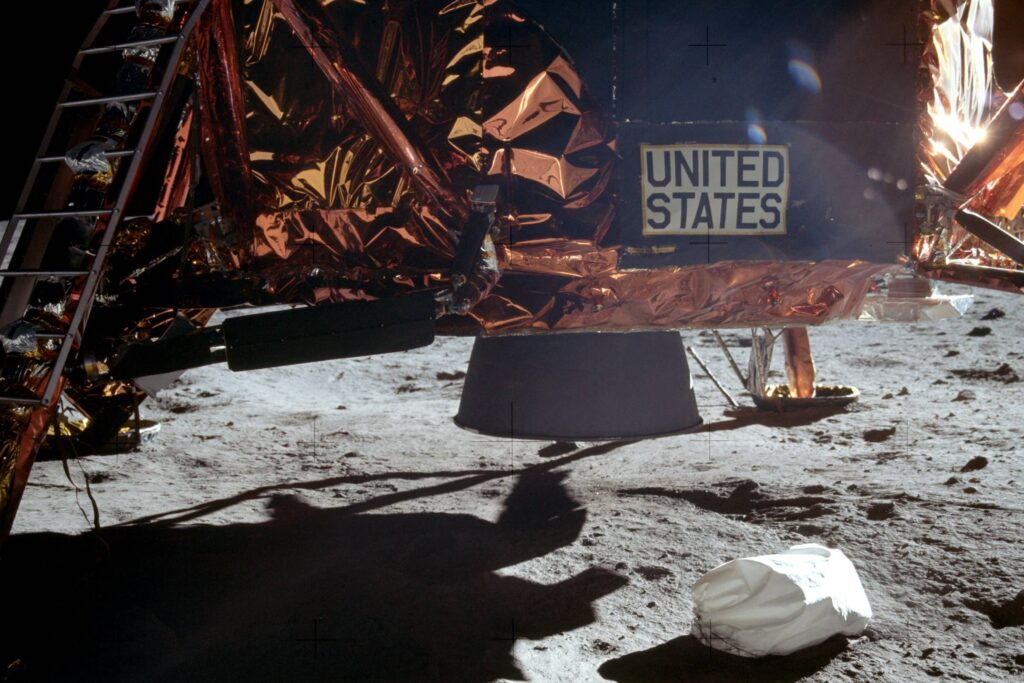You might think that if you’re lucky enough, you’ll be able to travel through space and have a life-changing experience. Feeling weightless completely changes how you feel about your body and the forces that have been applied to it since birth. On the other hand, watching the earth as a blue and green jewel from the window of a spaceship that contains all of humanity except you and your fellow travelers will definitely be amazing.
But as real astronauts have said, there are a lot of serious issues with spacecraft that are considered unpleasantly normal. For example, scratching the nose inside the helmet needs a solution. The astronauts attached Velcro fabric patches to the inside of the helmet glass and rubbed their noses against it. Also at the height of the space race, NASA and the Soviet Union decided to ditch the regular pencil in favor of a zero-gravity pen made by the Fisher Space Pen Company.
And of course, there is also the big little problem of body fluids in space. Of course, considering the amount of effort that has been spent to invent the most efficient, safe and convenient way to dispose of human waste in zero gravity, this issue is probably considered a big problem. However, while it may seem reasonable to throw astronaut waste into space, in most cases it is stored in spacecraft or, in the case of lunar missions, left on the moon. Yes, you read it right; There are currently packages of astronaut poop on the moon that have been left there for some reason.
The complex physics of poop in space
You may have seen a video of astronauts in zero gravity chasing liquid bullets around the spacecraft cabin. Fortunately, in such cases that liquid is potable water. Since the early days of long-duration space travel, most spacecraft have had vacuum toilets. However, according to reports, the first designed toilets were not that comfortable to use. For example, Apollo astronauts had to urinate standing up; While in order to defecate, they have to tie themselves to the toilet seat with a rope. The discarded material was then collected in the bag on the other side. But this method of defecation was not always effective in terms of health.
Over the years, NASA decided to invest millions of dollars in building better toilets. In a NASA report published in 2013, it is stated that the goal is to build a toilet that requires less time spent by the crew, has better cleanliness, and reduces the volume and weight of waste materials compared to the previous waste collection system in the 1990s, to 75 reduce the percentage This project cost approximately 23 million dollars for the US space agency.
But why didn’t the Apollo astronauts take their poop bags with them to Earth? Some might argue that leaving that debris on the moon is an act of interplanetary vandalism. But these earth wastes were actually left on the moon with the aim of pursuing the scientific goals of the missions. Weight is an important factor in any space journey, and it played a major role in the Apollo astronauts’ decision to leave human debris on the moon. In addition to achieving the great success of landing on the moon, the astronauts were tasked with collecting samples of lunar rock and soil and bringing them back to Earth for scientific study.
The margin of error involved in calculating how to safely lift off the lunar surface prompted NASA to drop a fair amount of material in favor of precious lunar cargo. After the Apollo missions, a lot of equipment was left on the moon, including cameras, several pairs of boots, telescopes, and golf balls. Among these items, there were 96 bags containing human waste.
Why are scientists interested in astronaut feces?
Although leaving feces in the alien environment is not an example of green thinking, these residues will not have a permanent effect on the lunar environment. No microorganisms present in human waste can grow in the unfavorable conditions of the lunar surface. However, some of them may be able to remain dormant spores for some time. After 50 years since the last human presence on the surface of the moon, human waste, which is probably now just bags of dust, may contain important information about the persistence of microorganisms in space.
Human feces on the moon (along with bags of urine, food scraps, vomit, and other debris that may contain microbial life) represent a natural, albeit unintended, experiment. The experiment tries to find out how well life would cope with the harsh environment of the moon. If microbes can survive on the moon, could they survive interstellar travel, allowing them to foster life all over the world, including places like Mars?
In very unfavorable environments of the earth, for example, on the edge of deep ocean hydrothermal vents, microbes can survive and we still do not know their limits. Feces left on the moon may help researchers understand these limitations. On Earth, some bacteria can enter a state of dormancy that allows them to remain completely inactive for decades (and much longer) until more favorable environmental conditions awaken them. Others are more resistant and have the power to multiply even in harsh conditions until something completely destroys them.
NASA reportedly wants to recover and examine bags of poop and other organic waste left on the moon by astronauts from six manned missions. Astrobiologists want to see if any of those microorganisms have undergone genetic mutations or become dormant due to the harsh conditions of the moon. Experiments may lead to new facts and help humans prepare for long-duration missions.
Of course, during the Apollo 16 mission, the astronauts conducted an experiment in which they kept a sample of nine types of microbes outside the spacecraft and exposed them to the conditions of space. Many of them survived. However, a few days in space is not equivalent to 50 years of being in this environment.


